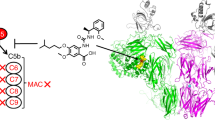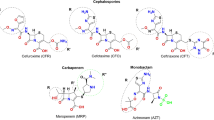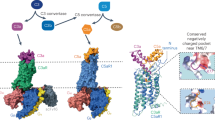Abstract
CHROMONE derivatives exhibiting unusual biological activity have been studied in these laboratories for several years. One of these, disodium cromoglycate (FPL 670), has been found to inhibit specifically the liberation of the mediators of anaphylaxis initiated by the interaction of antigen with reagin type antibodies. It is neither a bronchodilator nor an anti-inflammatory agent and its action is distinct from that of corticosteroids.
This is a preview of subscription content, access via your institution
Access options
Subscribe to this journal
Receive 51 print issues and online access
$199.00 per year
only $3.90 per issue
Buy this article
- Purchase on Springer Link
- Instant access to full article PDF
Prices may be subject to local taxes which are calculated during checkout
Similar content being viewed by others
References
Altounyan, R. E. C., Acta Allergologica (in the press).
Howell, J. B. L., and Altounyan, R. E. C., Lancet, ii, 539 (1967).
Mota, I., Life Sci., 1, 465; ibid., 917 (1963).
Ogilvie, B. M., Nature, 204, 91 (1964).
Sheard, P., Killingback, P. G., and Blair, A. M. J. N., Nature, 216, 283 (1967).
Author information
Authors and Affiliations
Rights and permissions
About this article
Cite this article
COX, J. Disodium Cromoglycate (FPL 670) (‘Intal’*): a Specific Inhibitor of Reaginic Antibody–Antigen Mechanisms. Nature 216, 1328–1329 (1967). https://doi.org/10.1038/2161328a0
Received:
Revised:
Issue Date:
DOI: https://doi.org/10.1038/2161328a0
This article is cited by
-
Cromolyn inhibits the secretion of inflammatory cytokines by human microglia (HMC3)
Scientific Reports (2021)
-
Identification of a small molecule that facilitates the differentiation of human iPSCs/ESCs and mouse embryonic pancreatic explants into pancreatic endocrine cells
Diabetologia (2017)
-
A review on herbal antiasthmatics
Oriental Pharmacy and Experimental Medicine (2011)
-
Drugs for asthma
British Journal of Pharmacology (2006)
-
Excavation of lead compounds that inhibit mast cell degranulation by combinatorial chemistry and activity-guided
Archives of Pharmacal Research (2004)
Comments
By submitting a comment you agree to abide by our Terms and Community Guidelines. If you find something abusive or that does not comply with our terms or guidelines please flag it as inappropriate.



